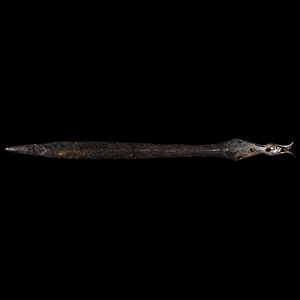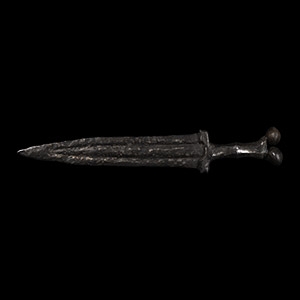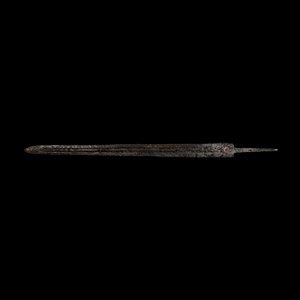Home > Auctions > 23 - 27 May 2023
Ancient Art, Antiquities, Natural History & Coins
Auction Highlights:
Ex Alexander Cotton collection, Hampshire, UK 1980s.
Cf. Khorasani, M.M., Arms and Armour from Iran. The Bronze Age to the End of the Qajar Period, Tübingen, 2006, items 41-43.
This short sword or dagger belongs to the category of blades with pennanular guard, with hilt and guard cast in one piece with the grip. This solid weapon has separate sets of encircling ribs on the grip. Negahban excavated similar weapons from the Marlik cemeteries, although sometimes the type combines grip and penannular guard with flanged hilts open to accept inlays.
Acquired 1980-2015.
Ex Abelita family collection.
See Muscarella, O.W., Bronze and Iron Ancient Near Eastern Artifacts in the Metropolitan Museum of Art, New York, 1988, pp.99-100, for similar.
The hilt of such swords was made separately, and unfortunately is nearly always missing from the archaeological records. Similar excavated examples have been recorded from the South Caspian area from Tomadjan and Ghalekuti.
Acquired in the early-1990s.
Ex Guernsey collection.
The Kusmirek Collection, UK.
Cf. Khorasani, M. M., Arms and Armor from Iran: The Bronze Age to the End of the Qajar Period, Tübingen, 2006, Cat.45,46, for type.
This kind of sword was entirely made of cast bronze. They were characterised by an 'ear' pommel and raised mid-rib on the blade, square shoulders and rectangular, open guard. The handle was cast on the blade. The square and solid sectioned handle has bossed with reinforcements which allow a better grip.
Acquired from Alan Cherry, Bournemouth, UK.
Ex Alexander Cotton collection, Hampshire, UK 1980s.
Cf. similar sword in Khorasani, M.M., Arms and Armour of Iran, Germany, 2006, cat.12, for similar example in the National Museum of Iran in Tehran.
These types of short sword or dirks were usually cast in one piece, and the penannular rib in relief was cast on at the same time with the handle of the blade. In some cases, however, the penannular rib was later cast on the dagger, possibly to strengthen a weak point at the junction of hilt and blade. The flanged hilt was originally filled with organic material like bone.
Acquired on the London art market, prior to 1980s.
The Kusmirek Collection, UK.
See Khorasani, M.M., Arms and Armour from Iran. The Bronze Age to the End of the Qajar Period, Tübingen, 2006, no.36, for type.
This sword finds a good parallel with a bronze sword with bell-shaped pommel, today in the National Museum of Tehran. Originally these swords had separately made hilt which was then cast on the blade. These swords were more typical of the North-West Persian territory, especially in the Amlash and Gilan areas.
Ex West German collection, Cologne.
The Kusmirek Collection, UK.
Ex old English collection.
Acquired from Timeline Originals, UK, 2015.
The Kusmirek Collection, UK.
See Gorelik, M., Weapons of Ancient East, IV millennium BC-IV century BC, Saint Petersburg (2003), pl.IV, no.16, for similar.
This type of daggers include lanceolate blades with a pronounced piercing and cutting function, often reinforced with a convex stiffening rib or fullers that follow the contour of the blade (Gorelik, 2003, pls. IV, 15-21, 23-25). It is commonly believed that the fullers were designed to drain blood, but this is a misconception; their purpose is to increase the strength of the blade and reduce its weight.
Acquired 1960s-1990s.
Late Alison Barker collection, a retired London barrister.
See D'Amato, R., Salimbeti, A., Early Iron Age Greek Warrior 1100-700 BC, Oxford, 2016, p.24, nos.G,L, for similar short swords of group A from the Aegean area; see also Kilian-Dirlmeier, I., Die Schwerter in Griechenland (außerhalb der Peloponnes), Bulgarien und Albanen, Stuttgart, 1993, no.291, from Archanes.
The Naue II, also known as the grip-tongue sword, was one of the longest lasting of all sword types. First appearing in the late Bronze Age it lasted well into the Iron Age, a span of 500-700 years, and it was made both in bronze and iron. As early as 1450 B.C., in northern Italy, smiths came up with an early type of a sword now known as the Naue II. It spread first into central Europe, Scandinavia and the British Isles. By 1200 B.C. it had spread to Greece, Crete, the Aegean Islands, the Levant, Palestine and Egypt. It was quite popular in Greece and the Aegean, but it is in Central Europe that the greatest number has been found. In all these areas it was the standard sword until the 7th century B.C. with iron replacing bronze, but still the same basic design.
Private collection, Munich, Germany, 1970s.
Private collection, London, UK, 2014, acquired from the above.
Cf. similar specimens in Tasic, N., Scordisci, and the native population in the Middle Danube Region, Belgrade, 1992, nos.56-59, and especially no.59.
Celtic swords of this period were longer, reaching one meter in length, with the tip having the tendency to be rounded, while the scabbards were less decorated or more simply ornamented than the swords of the previous period.
Acquired 1990s-early 2000s.
East Anglian private collection.
Cf. Nieva, I.F., Zubillaga, E.G., 'Las armas de las necropolis Celtibericas de Carasta y La Hoya (Alava, Espana), Tipologia de sus punales y prototipos del Pugio' in Journal of Roman Military Equipment Studies, 8, 1997, pp.137-150, fig.5, 2; Quesada Sanz, F., ‘Gladius Hispaniensis: an archaeological view from Iberia’ in Journal of Roman Military Equipment Studies, JRMES, 8, 1997, pp.251-270.
This type of dagger presents a plate handle system, very similar to that of the Fronton sword and bilobular types, but unlike these, it develops to an antenna terminal on the pommel. It is a type of dagger that is documented in peninsular necropoleis of Hispania from the Iron Age II, such as La Mercadera, Requijana de Gormaz or Uxama. It is type V of short antennae daggers according the classification of F. Quesada Sanz, a possible ancestor of the Roman pugio.
Acquired 1990s-early 2000s.
East Anglian private collection.
Accompanied by an academic report by Dr Raffaele D'Amato.
Cf. Miks, C., Studien zur Romischen Schwertbewaffnung in der Kaiserzeit, I-II Banden, Rahden, 2007, pls.46-51, for similar swords; also D'Amato, R., Arms and Armour of the Imperial Roman Soldier, London, 2009, p.88.
This kind of sword - called by modern scholars as ringknaufschwert or ring-pommel sword - was firstly diffused amongst the auxiliary troops, probably Sarmatians and Germans, and then, during the 2nd century A.D., was also commonly used amongst the milites legionis and the officers. The shape of their blades is similar to the Pompey typology, but a slightly less acute angle characterises the passage from the blade to the short point. There were longer specimens like spatha, opening the transformation of the legionary gladius in the longer spatha specimens of the successive period, and also shorter specimens. An important dating element for earlier specimens is the sword from the Matrica grave, in Pannonia, dated exactly to 147 A.D. based on the other grave goods. Specimens of the second half of 2nd century A.D. are known from Wehringen and Geneva (180 A.D.). A specimen from Bosnia could be chronologically assigned to the same period, although such kind of swords became much more widespread for infantry and cavalry in later times. However, the importance of such swords has been recently associated with the rank of the provincial officers who used them, including miniature variations of such swords used as pendants as insignia badge of the staff of the Provincial governors. It was connected with the image of the sword and the dagger as a symbol of the Imperial power.
Acquired 1990s-early 2000s.
East Anglian private collection.
Cf. Miks, C., Studien zur Romischen Schwertbewaffnung in der Kaiserzeit, I-II Banden, Rahden, 2007, nos.A321,12,13, from Illerup Adal.
Specimens of Roman spathae of 2nd-3rd centuries have been found in large numbers in Danish bogs (Nydam, Straubing, Thorsberg, Illerup). The Straubing-Nydam type shows straight and convergent cutting edges, the width of which is reduced along the blade.
133 - 144 of 2508 LOTS

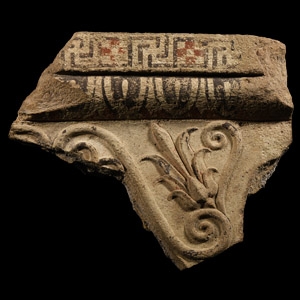
.jpg)


.jpg)
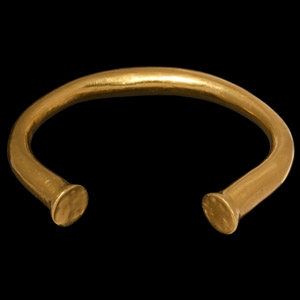
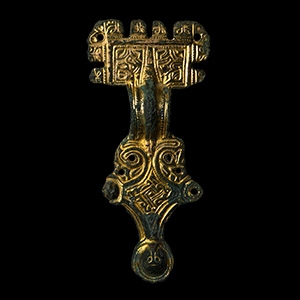

.jpg)
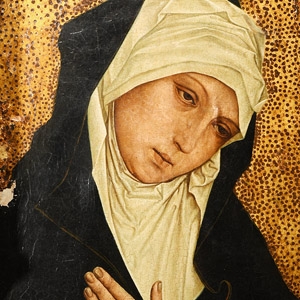

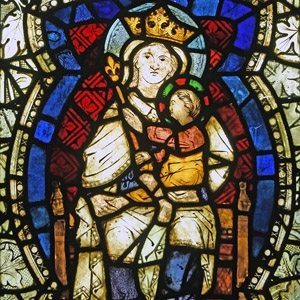
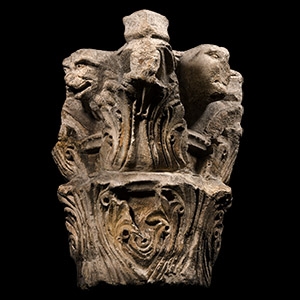
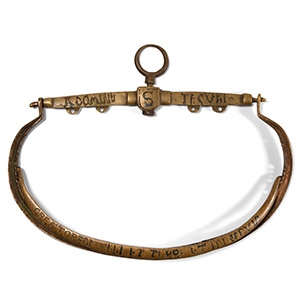
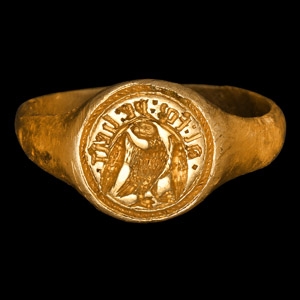
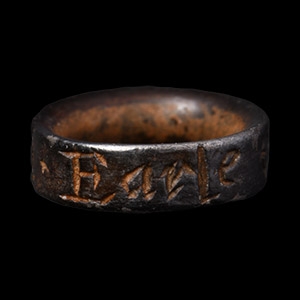
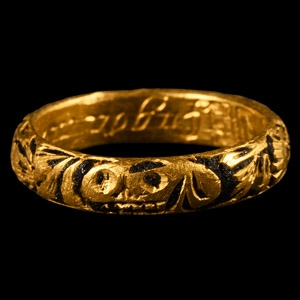
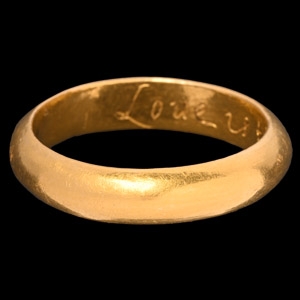
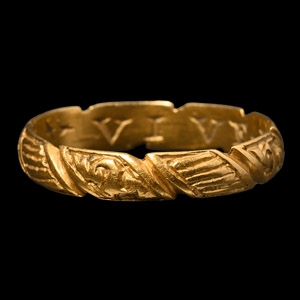
![English Milled Coins - George VI - 1937 - Cased RM Proof Coronation Gold Set [4] English Milled Coins - George VI - 1937 - Cased RM Proof Coronation Gold Set [4]](https://timelineauctions.com/upload/images/items/small/203351-s(2).jpg)

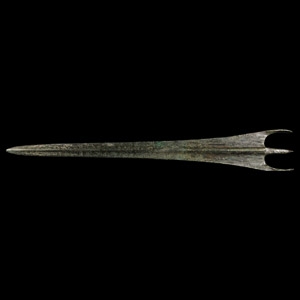
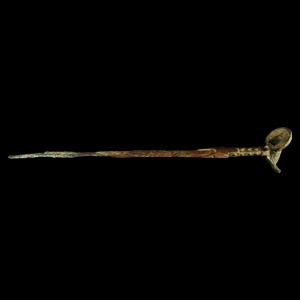
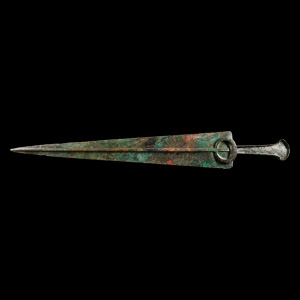


.jpg)
